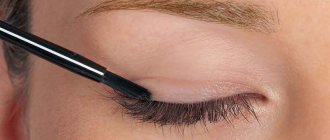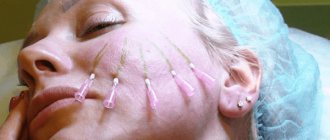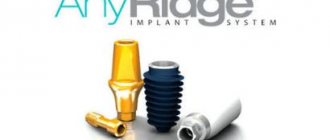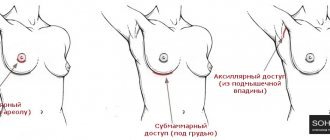Make an appointment
Published: 09/03/2020
Reading time: 5.5 min.
Number of reads: 19704
Rating:
Modern implant models have a lifetime warranty, so they do not need to be replaced even after very long use. The need for re-plasty may be associated mainly with replacing old samples with newer ones or with models of a different size (at the patient’s request). Also, in the case of older generation implants, it is worth taking into account a number of other factors, for example, age-related changes or breastfeeding. When to change breast implants after mammoplasty, and why you should not refuse to replace them if necessary, we will tell you in this article.
Why change breast implants?
As we have already said, repeated surgery is performed only if it is necessary to replace old-style implants, change the size of the breast, or in case of rupture of the endoprosthesis. Most often, old-style breast implants need to be replaced after 10 years.
There are several reasons why such endoprostheses wear out:
- internal impact of the filler, thinning the implant shell;
- reduction in capsule thickness;
- influence on the material of the body's immune cells;
- low quality of the implant, which may require early replacement.
Modern breast endoprostheses are characterized by the longest possible service life and a high level of safety for the body.
Implant rupture photo
In the photo below - a patient with a rupture of the left implant - was manifested by pain and swelling of the left gland.
Ultrasound and MRI revealed heterogeneity of the gel inside the implant, accumulation of fluid around it, and swelling of the gland tissue.
In some cases, there is no rupture of the implant capsule, but the gel leaks through it into the implant cavity, causing a reaction from the body. This happens extremely rarely with modern well-known manufacturers.
How long can you wear implants?
Some patients consciously take risks by refusing to promptly replace breast implants made from outdated materials. However, this can lead to serious side effects that may require immediate surgery. However, modern versions of implants can be worn throughout your life: they will not affect the condition of the body in any way. It is important to remember that there are individual indications for replacement that cannot be ignored. They may even apply to modern implants with a lifetime warranty. However, you need to learn about all these nuances from a specialist. In addition, even silicone implants and models made from other modern materials may require replacement. As a rule, this is associated with capsule rupture due to chest trauma. If we talk about prostheses with saline filler or other gradually obsolete materials, they may require replacement within 10–15 years. This is due to shell wear, leakage, and shape deformation.
Implant ruptures
It is quite difficult to break a new implant: it is very elastic and durable. Despite the inert silicone shell, while the implant is in the body, the body reacts to it by synthesizing active substances, which in some patients change the properties of the silicone shell. It becomes brittle and inelastic.
Most often, an implant rupture does not manifest itself in any way and is discovered by chance during a follow-up examination (MRI or ultrasound). Implant rupture can result in pain and breast enlargement due to swelling and fluid accumulation around the implant. An experienced diagnostician can find the location of the rupture by interrupting the implant shell layer and the exit of the gel beyond its limits.
Indications for breast implant replacement
Aesthetic preferences.
The patient may not like the result, for example, she may want to change the size or shape of her breasts. This may be a good reason for repeat mammoplasty. However, it is important to understand that a new surgical intervention can be performed no earlier than a year after the previous procedure, so that the body has time to recover. All details of the repeated procedure should be obtained from the surgeon. It is the specialist who will determine the optimal time for the new operation and tell you how to prepare for it.
Age-related changes.
With age, skin turgor changes, so the prosthesis may sag. Patients often think that this is due to the severity of the endoprosthesis. In fact, everything depends precisely on age-related changes, a decrease in the production of elastin and collagen. In addition, dentures can sag due to lactation, pregnancy, sudden weight gain or loss. In this case, the decision about whether to change the implants is made by the patient herself. If she is not satisfied with the result, the surgeon will offer options for restoring the shape of the breast.
Development of complications.
Implants must be changed if complications arise during the rehabilitation period. They can develop several years after surgery, especially if the patient does not follow the specialist’s recommendations. For example, during rehabilitation you should never sleep on your stomach, refuse to wear compression garments or actively engage in sports: all this can cause sagging of the implant, rupture of the sutures and other unpleasant complications that require repeated surgical intervention. It is important to note that breast implants do not release toxic substances even when ruptured: the fillers are compatible with human tissue and do not cause serious harm if their integrity is lost. However, physical damage to the prosthesis requires its replacement and repeat mammoplasty.
Capsular contracture
An implant is a foreign body for the body. The body tries to limit itself from it by forming a protective barrier of connective tissue - fibrous fibers. These fibers are completely similar to scar tissue and, during the process of maturation, have the property of contracting. Thus, the scar capsule around the implant begins to shrink over time, crushing and folding the implant. Its shape changes. It becomes hard and ball-like. The aesthetics of such breasts change accordingly. This is more noticeable in thin patients with small breasts.
Capsular contracture occurs more often with smooth implants. Textured implants are characterized by a lower frequency. Contracture occurs most rarely on implants with a polyurethane coating (Polytech and Silimed).
Capsular contracture can occur as a result of a hematoma formed around the implant after surgery.
It has been noted that with submammary access and placement of implants under the muscle, capsular contracture occurs less frequently than with placement of implants under the gland and when installing implants through an incision in the armpit.
Motiva implants have a nanotextured surface, although they are smooth implants. There is almost no capsule formation around them. But due to this, they are more likely than other implants to expand the cavity around themselves and because of this, they are more likely to shift and rotate.
Pregnancy and breast enlargement
Some patients plan to have implant replacement procedures after childbirth. The fact is that during pregnancy and lactation, the mammary glands first increase and then lose their volume. This leads to sagging of dentures if they were installed several years before childbirth. Repeated surgery will help restore the beautiful shape of your breasts. It can be carried out in parallel with breast lift and nipple correction, which will restore aesthetics. In addition, even without implants installed, breasts can change shape as a result of childbirth and pregnancy. Patients who have not previously resorted to mammoplasty can correct the contours of their breasts thanks to this procedure. Of course, you will have to wait until lactation ends: surgery cannot be performed while breastfeeding. It is important to note that the endoprosthesis will not affect lactation in any way in the future, so the patient can safely breastfeed the baby in the future.
Violation of the integrity of the implant
Video of the patient after the operation (her photo above shows a violation of the integrity of the left implant). Both implants, their capsule, and the remains of the gel were removed and re-augmentation was immediately done - larger implants were installed - Polytech.
When replacing implants, it is necessary to take into account that the resulting cavity after removal of the old implant and its capsule will be larger than the cavity was during the initial augmentation. And in a large cavity, implants often shift and rotate. Therefore, when replacing implants, it is better to change them to implants that are at least a little larger.
How to change breast endoprostheses
However, when choosing modern materials, as well as in the absence of clear indications, you will not need to think about how many years to change implants. If the patient nevertheless decides to undergo surgery, the procedure will be performed in exactly the same way as conventional mammoplasty, in two main stages.
Preparation.
At this stage, the patient needs to visit a plastic surgeon and undergo an examination. This includes not only visual diagnostics, but also a number of specific procedures:
- mammography;
- ECG;
- fluorography;
- Ultrasound of the mammary glands and veins of the lower extremities;
- laboratory research.
If necessary, additional studies may be prescribed by highly qualified specialists. If the tests allow surgical intervention, the doctor gives recommendations regarding preparation for mammoplasty and explains the nuances of the operation.
Replacement of endoprostheses.
In general, the procedure resembles conventional mammoplasty and is also performed under general anesthesia. During the operation, the surgeon will remove the old implants along the line of the old scar, perform a capsulotomy and install new endoprostheses.
Contraindications for breast replacement
In some situations, mammoplasty is strictly not recommended:
- oncological formations in the mammary glands. Treatment of the underlying disease is necessary after which the breast can be restored using implants.
- pregnancy. Doctors do not recommend performing any surgical manipulations on the body during this period, except in situations where the woman’s health or life is in danger;
- lactation. When feeding a baby, a woman's breasts change and surgical intervention is undesirable. Even if asymmetry appears, doctors recommend waiting until the end of the lactation period and only then taking corrective measures;
- exacerbation of chronic diseases and decreased immunity. In such situations, there is a high probability of complications, for example, in the form of infections.
Rehabilitation period
It takes at least a month. During the first four weeks, the patient must wear compression garments prescribed by the doctor. You cannot refuse such a bra: it supports the breasts in an anatomically correct position, prevents the displacement of prostheses and accelerates regeneration processes. After a month, you can replace it with a regular thick sports top. Models with hard underwires and a push-up effect will need to be abandoned until the scars heal completely. Specialists at the Bust Clinic breast surgery center will give all the necessary recommendations for the rehabilitation period. Patients at the clinic are given a special reminder: following these instructions can speed up the regeneration process and reduce the risk of side effects.
How does the replacement work?
Knowing how long breast implants last , it becomes obvious that sooner or later there will be a need to change them. The process of carrying out such a procedure consists of two main stages:
- preparatory period;
- reendoprosthetics.
At the preparation stage, the patient visits a plastic surgeon. He conducts a thorough examination of her, evaluates the results of mammography and gives recommendations regarding lifestyle before surgery. During this time, taking herbal medicines, as well as drinking alcohol and smoking is prohibited.
The operation itself lasts from one to two hours, depending on its volume and complexity. The replacement of endoprostheses occurs under general anesthesia. It includes several main stages:
- removal of previous implants by cutting the skin along the line of scar formation from the first operation and removing old prostheses;
- capsulotomy or excision of the capsule formed around the implant with partial removal of fibrous formations;
- installation of endoprostheses in an already formed bed or one created specifically for the size of a new implant.
Women with breast implants must wear compression garments for a month after plastic surgery. Also, throughout the entire rehabilitation period, patients are prohibited from visiting the bathhouse and sauna, going to the solarium or sunbathing in direct sunlight, or engaging in sports or physical labor until the tissues heal.
Possible complications
Repeated surgery is no more dangerous than the first, but may cause some complications. Possible negative consequences of re-endoprosthetics include:
- formation of hematomas;
- formation of contractures;
- development of infections;
- the appearance of keloid scars;
- development of a double fold;
- fusion of mammary glands.
All negative consequences can be neutralized if you contact a competent specialist. Doctors at the Bust Clinic will select the best options for prostheses from high-quality modern materials, which can help reduce the risk of allergic reactions and other side effects.
Factors affecting wear
Among the reasons that determine the service life of breast implants, the following are in first place in importance:
- age characteristics;
- pregnancy and breastfeeding;
- changes in gland size due to weight loss or gain;
- the reaction of a woman’s body to the introduction of a foreign body into it;
- location of endoprostheses.
The lifespan of implants largely depends on their quality. Cheap breast prostheses very often begin to leak, change shape or rupture as they wear out. Such changes usually occur after a chest injury, as well as as a result of surgeon errors.
Studying the question of how many years you can wear breast implants, experts found that most women after mammoplasty were satisfied with the result and understand the importance of changing endoprostheses. Despite this, there is also a large percentage of the fair sex for whom breast augmentation surgery did not end entirely successfully. In such patients at plastic surgery clinics, dissatisfaction is associated with the following postoperative complications:
- rupture and leakage of the endoprosthesis;
- discrepancy between the resulting breast shape and the one declared by the woman before surgery;
- the body's reaction to foreign material;
- the occurrence of other undesirable consequences of the operation.
Do not forget that after installation of breast implants you need to undergo an annual breast examination. This will help prevent the development of pathological conditions and maintain the woman’s health.
Prevention of complications
To reduce the risks when changing breast implants, you need to follow the following recommendations from experts:
- strictly follow all medical instructions, including - do not sleep on your stomach, avoid physical activity, do not visit the solarium, baths, saunas, swimming pools;
- take special antibacterial drugs;
- Wear compression garments prescribed by your doctor.
You need to understand that violation of the regime during rehabilitation can lead to serious consequences that will require treatment or re-operation. In addition, choosing the right prosthesis will help reduce the risks of the procedure. You can entrust this task to the experienced specialists of Bust Clinic, who know all the nuances of selecting materials and work only with certified products from leading manufacturers.
To find out all the details of replacing breast implants, visit a specialist at Bust Clinic. Our surgeons will tell you all the details about the indications for the procedure, help you choose the appropriate option for new implants and talk about the rules of rehabilitation after surgery.
Removal of implants
Removing implants has become fashionable following the uproar over cases of implant-related lymphoma. Lymphoma occurred more frequently with Allergan implants. Therefore, they stopped producing them and were recalled from the market, but cases of lymphoma also occurred with implants from other manufacturers.
Some girls seek implant removal because their breasts are “too heavy.”
After the removal of implants, the breasts usually sag and a breast lift is required for aesthetic purposes.











